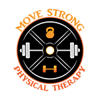Groin Strain Rehab
For Groin strains or strains of the adductor muscle group, rehabbing is important. Groin strains are very common in sports where athletes have to accelerate, decelerate, change directions, and rotate.

When working with our athletes inside of Cressey Sports Performance in Hudson, MA who have been dealing with a groin injury, they will typically present with pain and/or limited mobility in the adductor muscle group and with pain with lateral movements as well as twisting and rotating.
Groin strains can vary in severity and intensity and each case is different, but when an athlete or client presents with an injury like this, they typically present with some type of mobility limitation at their hips. If mobility is limited in some capacity, it is typically limited in body stretches and exercises for hip extension, rotation, and/or abduction. To address this, hands-on manual therapy by a licensed medical provider is ideal or self-myofascial release using a foam roller or lacrosse ball can help. Here are some physical therapy exercises for groin strains.
Self Myofascial Release
Rectus Femoris, Adductors
Vastus Lateralis/Tensor Fascia Latae
Posterior Hip Musculature
If an adductor strain is acute, meaning it just happened in the past few weeks, we don’t necessarily want to go to high-intensity loading via strength and conditioning right away. If so, then we will incorporate simple exercises and stretches such as Isometrics to help to start loading that tissue. An isometric consists of pushing into an immovable object where the length of the muscle isn’t changing, but a contraction is occurring.
Adductor Isometrics
We will typically prescribe 2-3 sets x 8-12 reps at varying angles as shown in the video. We instruct the client to push into something at an intensity of 4-5/10. Isometrics can be a great way to start loading healing tissue without overloading it.
Once an athlete has tolerated multi-angle isometrics, then we will progress them into Band Resisted Hip Adduction.
Band Resisted Adductor Strengthening
As with the isometrics, we perform these stretches as varying degrees of hip flexion (hip angle). We do this because the adductor muscle group works in hip flexion and hip extension so we want to make sure that we are targeting them in different positions.
We will typically start someone off performing 10 reps at each position and then gradually add more reps/sets. This groin rehab exercise is harder than it looks because the athlete has to fight the band trying to rotate their trunk and body towards the band attachment point. While performing these, perform them with a slow and controlled eccentric contraction (slow and controlled when bringing the leg out to the side.
By going slow and controlled, it allows the muscle to build more resiliency as well as enhance the muscle and body’s capability to control end range.
Once an athlete has progressed through isometrics and then band resisted hip adduction, we will start to add in some forms of strength training.
Movements such as:
Slow Eccentric Split Squats
Slow Eccentric Reverse Lunges
Another movement that we will add in is called a Modified Copenhagen.
Modified Copenhagen
This is a very challenging movement and one that we trial with a client and save for once they are ready.
We will also incorporate various forms of core strengthening. With an adductor injury, it is typically not just an adductor injury, but a lack of contribution of the abdominal musculature to help stabilize the pelvis and lower body. In turn, it can become a tug of war between the adductors and the abdominals and eventually one “wins” and the other is injured.
We will typically start with a drill called a Supine Kettlebell Pullover to work on good trunk position.
Supine KB Pullover
Key Points:
Keep low back in contact with floor.
Breathe out before bringing weight overhead.
Don’t crush the ground with your low back.
Then, once an athlete can control this position, we will add in movements that work on resisted trunk flexion/extension, rotation, and lateral flexion such as:
Stability Ball Rollouts
Modified Side Planks
Anti Rotation Press
The movements mentioned above are just a few examples of what we may do when someone is coming back from a groin strain injury. By no means is this an exhaustive list.
If you are dealing with a groin strain or another type of injury and want to get back to doing what you love, take that first step and reach out HERE.



